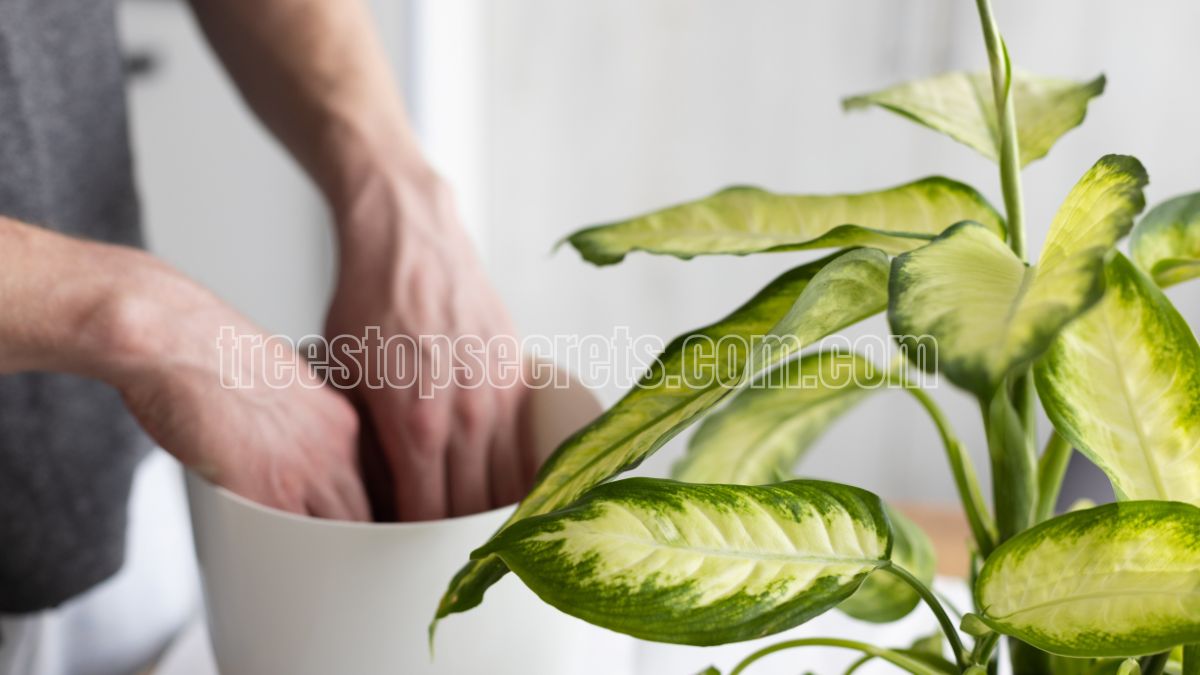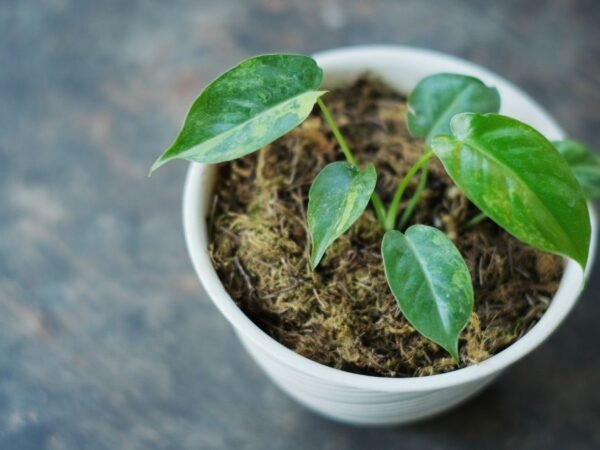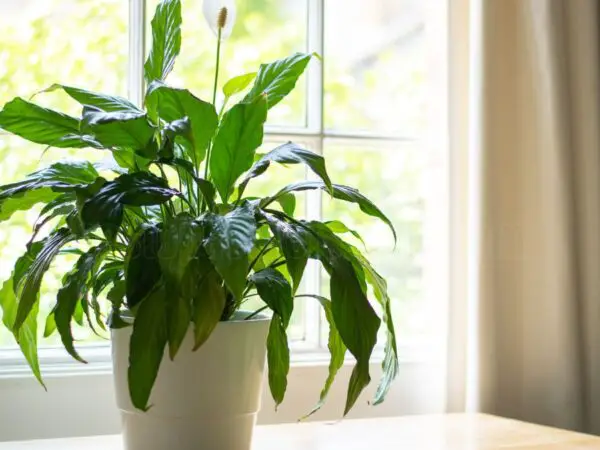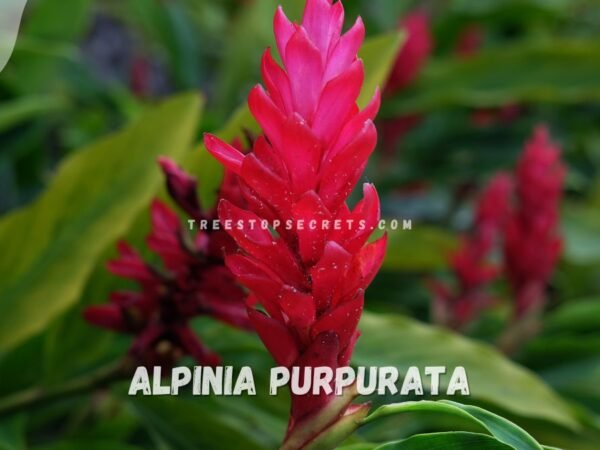Providing proper dieffenbachia conditions is the key to these colorful houseplants making your home their happy place. Famous for their beautiful leaves, dieffenbachia plants need just the right amount of light, water and soil to flourish. They thrive in low light, doing best in indirect sunlight, which makes them perfect for interiorscapes including homes and workplaces.
Only water your plants when the top inch of soil is dry to the touch. This prevents you from overwatering and risking root rot.
Humidity levels are also crucial for dieffenbachia. Plants prefer humidity levels around 50% and dropping humidity will cause lower leaves to yellow and drop. These fundamentals go a long way in keeping your dieffenbachia healthy and thriving, while adding even more beauty to your home or office.
In the next few sections, we’ll dive into dieffenbachia care and maintenance, providing expert tips and tricks to keep your plant thriving.
Key Takeaways
- Give your dieffenbachia bright, indirect light and watch for signals of insufficient or excessive sunlight. Move the plant around as necessary until you find a place where it can be healthy.
- Plant in a light soil mix that holds moisture but doesn’t stay soggy. Monitor soil moisture closely, and replace the soil every few years to maintain healthy roots.
- Give your plant a thorough watering once a week, or every two weeks. Always water well, then allow the top 1-2” of soil to dry out before watering again. It helps avoid situations like root rot, producing vigorous plants.
- Keep room temperatures in the range of 60 to 85 degrees Fahrenheit, and protect from cold drafts. This consistent warm temperature range is important for your plant’s health.
- Give your plants a monthly fertilizer dose while they are actively growing to encourage new growth. Prune regularly and remove any unsightly dead leaves to maintain a healthy beautiful appearance.
- Watch for usual pests and respond promptly if you see any traces of infestations. By consistently checking in on your dieffenbachia, you can keep it healthy and thriving.
Optimal Growing Conditions
Providing optimal growing conditions will help dieffenbachia thrive and flourish. This plant loves bright, indirect light, preferably from an east or west-facing window. Lack of adequate light can cause it to produce all green leaves and too much direct sun will cause the leaf to yellow.
If natural light is insufficient, particularly in the winter months, grow lights should be used.
1. Understanding Light Needs
Understanding light needs is crucial for dieffenbachia. Properly positioning dieffenbachia allows you to achieve vivid leaves and striking patterns.
Monitor periodically for stress due to excess or insufficient light and move the plant if necessary.
2. Soil Composition for Healthy Roots
Providing a mix of soil that drains well is very important. Use a mix of potting soil, peat moss, and perlite to keep it moist but not waterlogged.
Compacted, heavy soils can lead to root rot, so plan to replenish the mix every few years to keep nutrients high.
3. Watering Techniques and Frequency
We recommend watering your dieffenbachia plant once a week or once every two weeks, allowing the top 1 inch of soil to dry out in between. Choosing pots with drainage holes will help avoid root rot, a key ingredient to any houseplant's timely demise.
4. Ideal Temperature Ranges
To maintain a consistent environment for your dieffenbachia plant indoors, keep air temperatures between 65°F and 75°F, avoiding cold drafts that could affect this popular houseplant's health.
5. Maintaining Humidity Levels
Like many tropical plants, Dieffenbachia prefers moderate to high humidity levels. Either mist the leaves regularly or invest in a humidifier to increase moisture.
You can set the plant pot atop a pebble tray with water to boost local humidity even more.
Essential Care Tips
With a little knowledge and attention, you can keep your dieffenbachia plant indoors looking green, full, and healthy. Here are some essential tips to help your popular houseplant succeed.
1. Fertilization Schedule for Growth
It is important to fertilize dieffenbachia once a month during the spring and summer growing season. A balanced, water soluble fertilizer gives trees the essential nutrients they need to produce lush, green leaves.
It’s crucial to dilute the fertilizer properly, as over-fertilization can negatively impact the plant’s health. Monitor its growth closely, as too much or too little will leave the plant looking lackluster, and you’ll know to alter your fertilization schedule. A complete, general-purpose houseplant fertilizer is typically effective.
2. Pruning Techniques for Aesthetics and Health
Pruning dieffenbachia regularly will ensure that both the aesthetic and health of your plant are in harmony. Cut off any spindly growth to create a fuller look.
Cut off any yellowing or damaged leaves as soon as you spot them to stop the spread of disease. Clean, sharp scissors cut more accurately and result in less damage. Continually look at the plant’s overall form to determine what pruning will be needed.
3. Repotting Instructions for Longevity
Proper repotting every 2-3 years is key to their long-term health. Choose a pot just one size bigger to prevent leftover soil from holding moisture.
Carefully take the plant out of its container, keeping the roots in one piece. Add an appropriate amount of new soil mix so that the plant will be at the same depth as it was in the old pot. Water well immediately after repotting to help the soil settle.
4. Seasonal Adaptations in Care Routines
In winter, cut back on watering, since dieffenbachia’s growth will slow down. To avoid browning leaves, increase humidity and pay attention to the amount of light your plants are getting.
Keep the plant away from cold drafts and avoid sudden temperature changes, keeping the room temperature between 65°F and 75°F.
Common Pests and Issues
Here are the most common Dieffenbachia pests and how to treat them. Catching these hazards ahead of time can ensure that your plant remains healthy and thriving. Frequent checks for pests such as spider mites, mealybugs, and aphids are key.
Spider mites typically cause stippling and fine webbing on leaves. Mealybugs look like clumps of cotton. One of the easiest ways to spot aphids is by their sticky secretions, known as honeydew, on leaves. A little magnifying glass will allow you to see these little irritants much better.
1. Identifying Common Pests
Inspect your plant carefully. Webbing and yellow spots are signs of spider mites, which reproduce rapidly and can be moved by the wind. Watch out for mealybugs’ characteristic cottony clusters, as even a handful of these suckers can breed quickly.
Sticky, shiny residue is a sign that aphids have been feeding. The key is early detection—distortion and puckering of leaves can develop quickly.
2. Sustainable Pest Management Strategies
To control, try insecticidal soap or neem oil for a natural solution. Regularly cleaning leaves and debris will help remove dust and discourage pests.
Releasing natural predators such as ladybugs into the environment can help do this organically. Rotate your pest management methods to reduce the chance of pests developing resistance.
3. Troubleshooting Common Problems
If you notice leaves turning yellow, either fix your watering or look for signs of root rot. Brown leaf edges are a classic sign of too little humidity.
Pay special attention to droopy foliage; this is a common sign of both over and underwatering. Having a written list can help you to focus your troubleshooting.
4. Signs of Stress Beyond Overwatering
Check for signs of wilting or stunted growth not caused by overwatering. Sudden changes in temperature may be causing your plant stress.
Nutrient deficiencies can present themselves as yellowing leaves. By doing so, you can create a healthier environment that will allow your plants to thrive.
Propagation Methods
Learning these different propagation ways for dieffenbachia will help you create a more beautiful collection and have a more productive gardening experience. Healthy parent plants and a close eye on the propagation environment are key to successful propagation.
Sanitize your tools to avoid transferring diseases and make a clean cut to encourage the quick transition to new growth. By keeping a close eye on your new plants, you can tailor their care to suit changing conditions and ensure they thrive.
1. Division Technique Explained
Dividing involves gently separating an adult dieffenbachia when repotting. To guarantee the success of each division, it is important that they have healthy roots and stems when divided.
Replant these divisions in appropriately sized pots with clean media to give them the best possible chance to root and grow. Immediately after division, water deeply to ensure the soil settles around any new roots that may have formed.
2. Stump Method for New Growth
Severing a healthy stem back to a stump will stimulate new growth from the base. This approach calls for continued care of the stump, encouraging strong new growth.
Keep an eye out for new growth emerging from the stump. Make changes to your cultivation practices to successfully bring new life to mature plants!
3. Stem Cuttings Simplified
As for propagation through stem cuttings, cut healthy segments from the parent plant. A sterile knife will create a clean cut so the plant has less chance of infection.
Put the cuttings in a suitable environment, whether that’s water or soil, and keep their conditions humid and well-lit. Keep an eye on the cuttings as they begin to root and reassess care as they grow their new roots.
4. Air Layering for Advanced Propagation
Air layering is getting roots to develop on a stem while still attached to the mother plant. Make a shallow cut, bind the area with damp sphagnum moss, and then encase it in plastic.
Watch the moss for signs of dryness until roots form. After they have developed roots, simply snip the stem and replant your new plant in some new dirt.
Conclusion
With proper care, your dieffenbachia will add vibrancy and beauty to your home or office for years to come. Continue to give the plant bright, indirect light and water once the top inch of soil is dry. Keep an eye out for pests such as spider mites and mealybugs. Getting them early is going to be key in saving your plant. Propagation offers a fun way to expand your indoor garden. Make sure you use clean shears or knives to make cuttings so that you can propagate new plants. By following a few basic tips, you can keep your dieffenbachia flourishing for many years.
Whether you share your success stories or ask questions, contributing to the community is invaluable. Meet other plant enthusiasts and exchange care advice. Explore dieffenbachia care now and see your plants flourish!
Frequently Asked Questions
What are the optimal light conditions for Dieffenbachia?
What are the ideal light conditions for the popular houseplant, dieffenbachia? Excessive direct sunlight can burn the large leaves, while insufficient light may hinder growth. For optimal results, place your dieffenbachia plant indoors near a window to receive bright, indirect light.
How often should I water my Dieffenbachia?
Water your dieffenbachia plant when the top inch of soil is dry, usually every 1-2 weeks, and adjust based on the humidity and temperature.
What type of soil is best for Dieffenbachia?
To provide good drainage for your dieffenbachia plant, use a standard indoor potting soil that drains well. A mix of peat, perlite, and orchid bark is ideal, promoting proper aeration while preventing roots from rotting.
How can I tell if my Dieffenbachia is unhealthy?
To determine if your dieffenbachia plant is unhealthy, inspect for pests, overwatering, or improper light conditions.
Can Dieffenbachia tolerate low humidity?
Though the dieffenbachia plant loves high humidity, it will do fine in less. Otherwise, you may find that your houseplant is growing at a much slower rate. Simply misting your plant or using a humidity tray will do the trick.
How do I propagate Dieffenbachia?
To propagate the popular houseplant Dieffenbachia, you can use stem cuttings. Take a healthy stem and cut it just below a node. Then, place it in water or moist soil in a warm room to encourage root growth.
Are Dieffenbachia plants toxic?
Yes, the dieffenbachia plant is poisonous to humans when eaten, and its sap can cause burning and swelling. To prevent potential health hazards, ensure that this popular houseplant is kept out of reach of pets and small children.
Image Source: Paid image from CANVA





